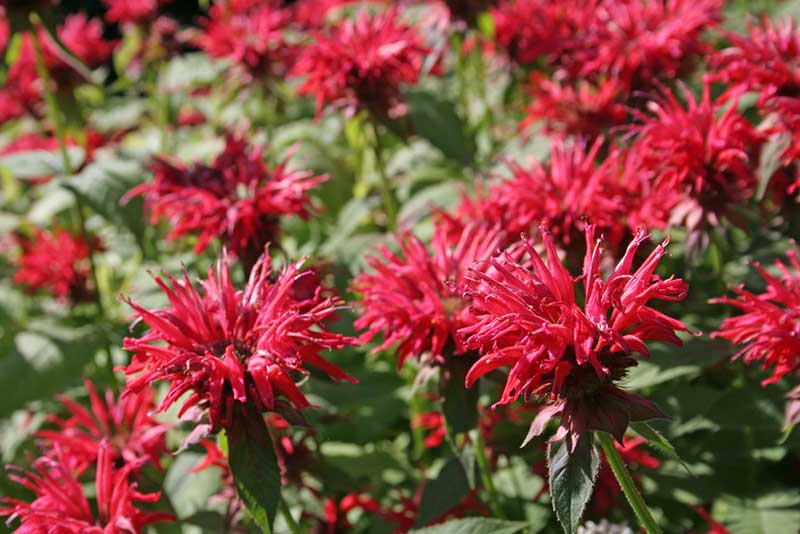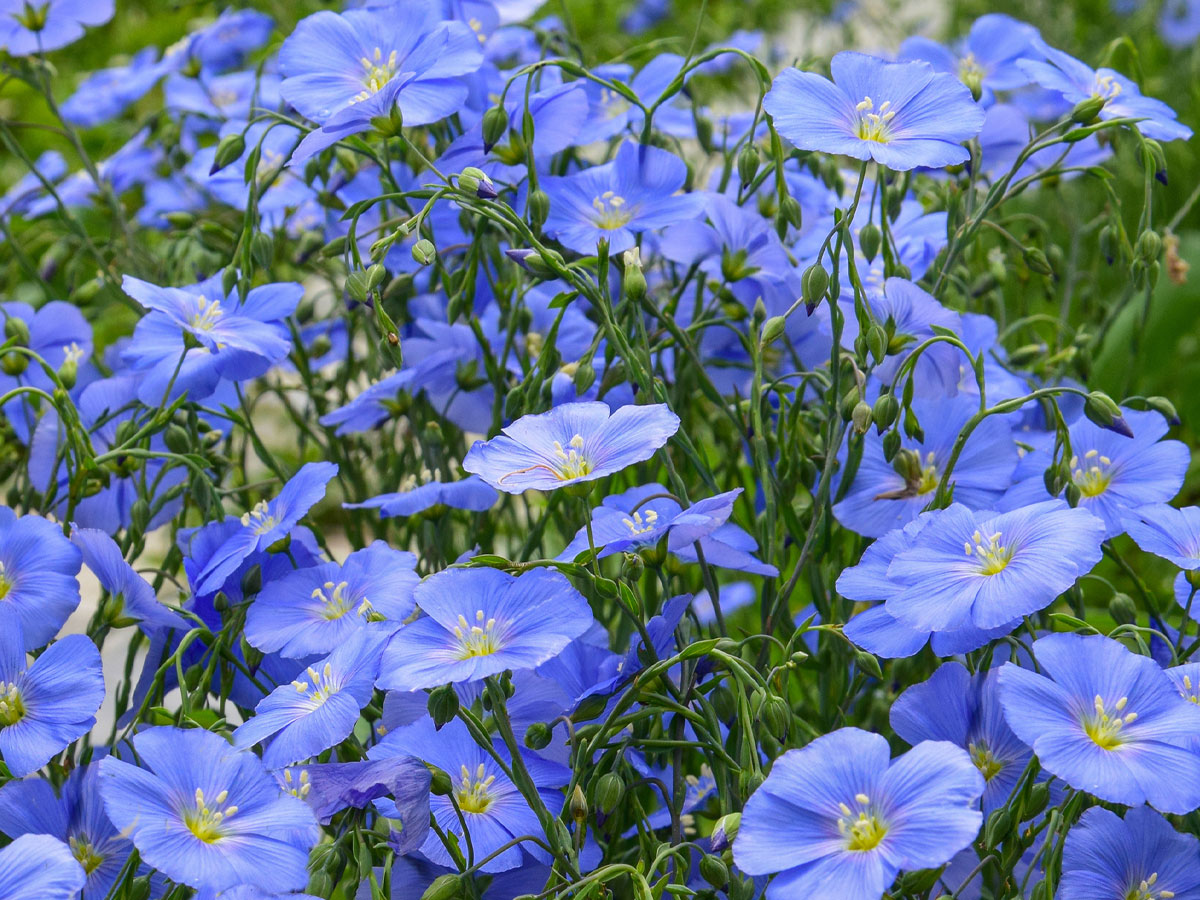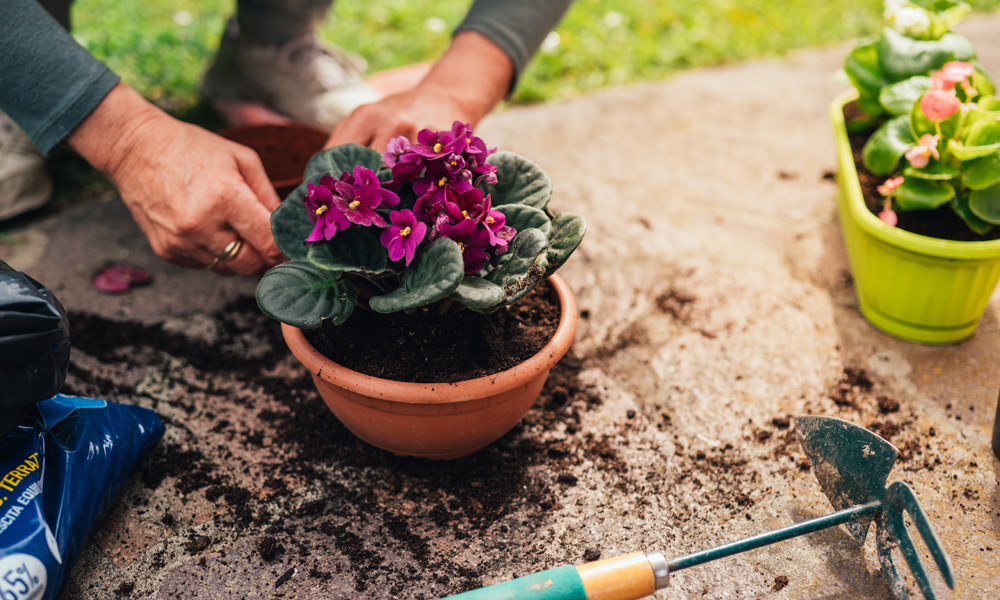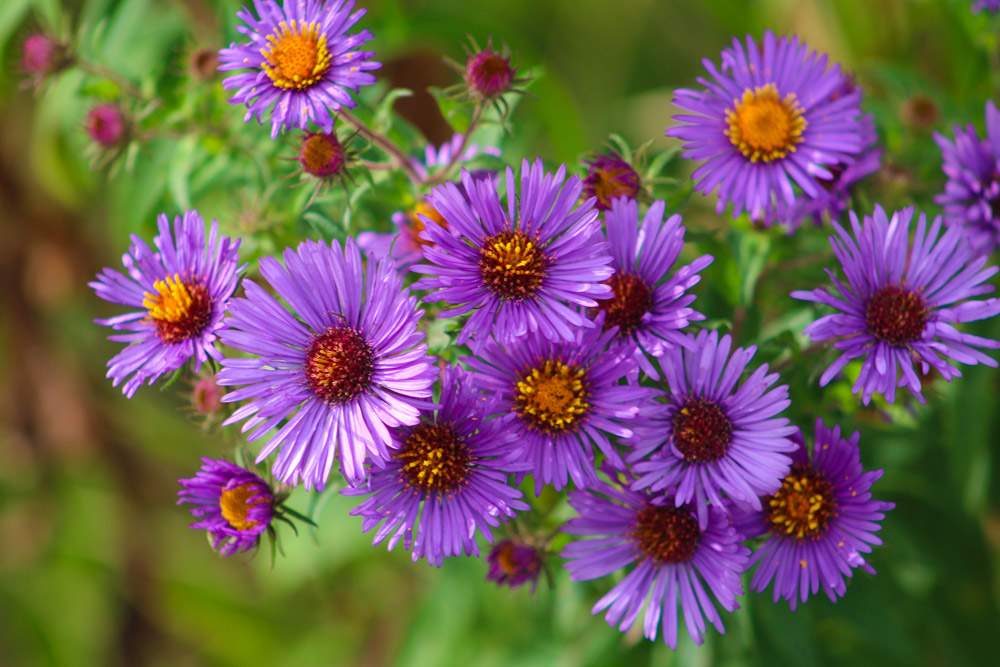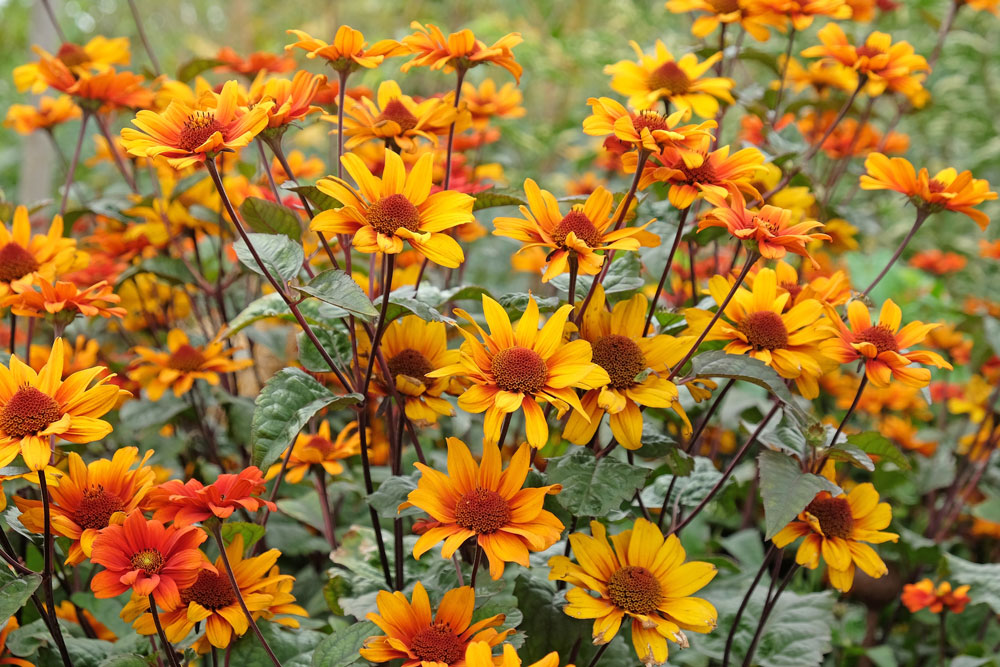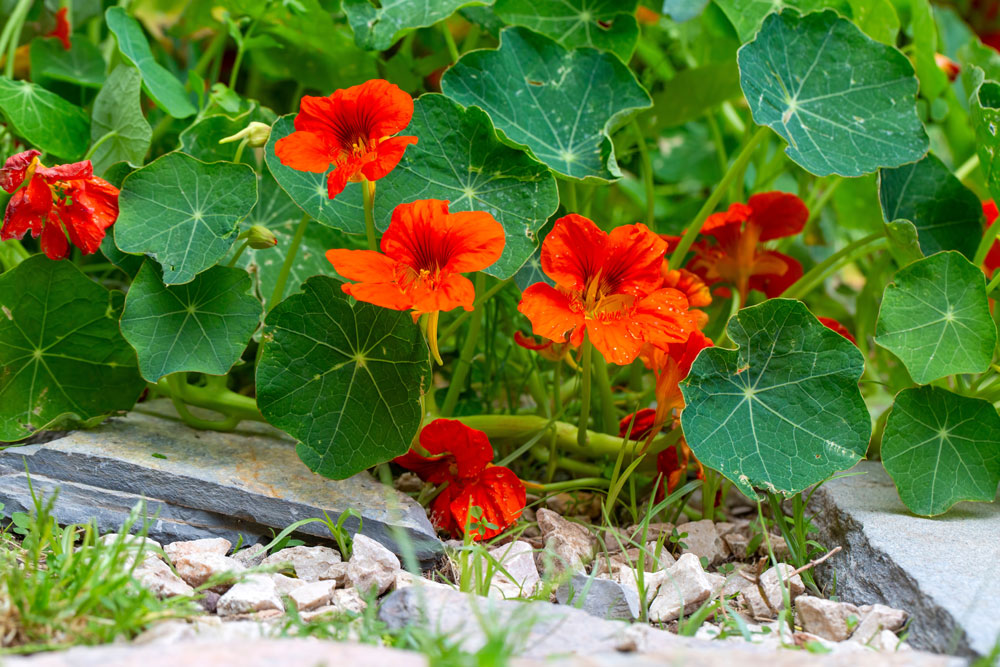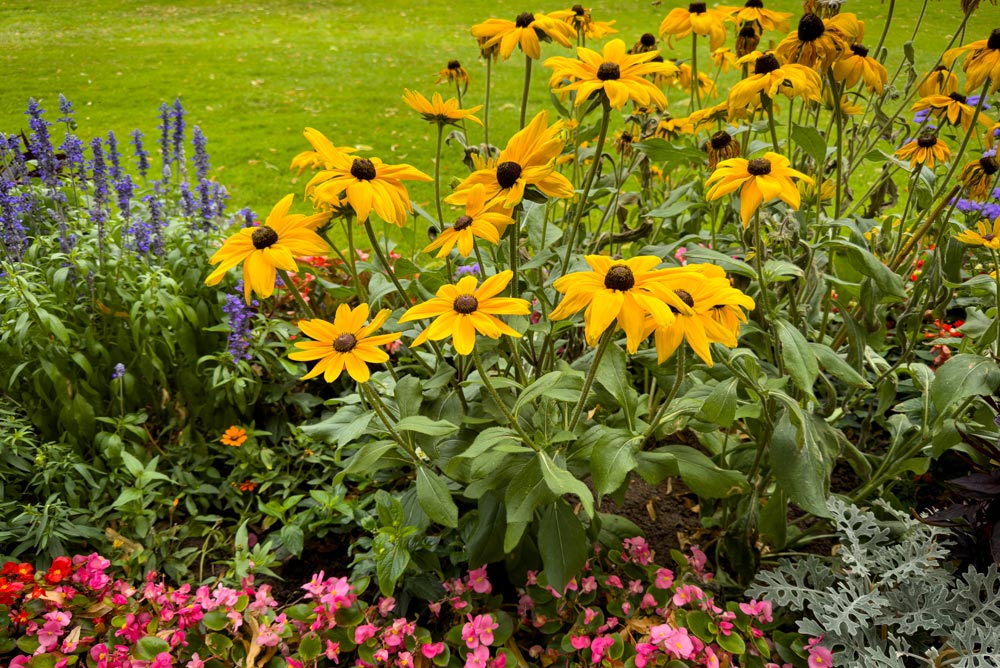
Looking to add lasting color to your garden without the annual replanting hassle?
April offers the perfect opportunity to direct sow perennial flowers that will reward you with years of beautiful blooms.
These reliable performers establish strong root systems in spring’s warming soil, returning with increasing vigor each season.
Direct seeding perennials isn’t just economical—it allows plants to adapt naturally to your specific soil conditions while supporting pollinators like bees, butterflies, and hummingbirds.
Before sowing, assess your garden’s sunlight (full sun, partial shade, or mostly shaded) and soil type to select plants that will thrive in your conditions.
For a harmonious design, combine plants with varied heights, bloom times, and textures.
Pair tall, structural plants like hollyhocks with medium-height bloomers such as coneflowers, and add low-growing varieties along edges.
This layered approach creates visual interest while extending your blooming season from early summer through fall.
1. Black-Eyed Susan (Rudbeckia)
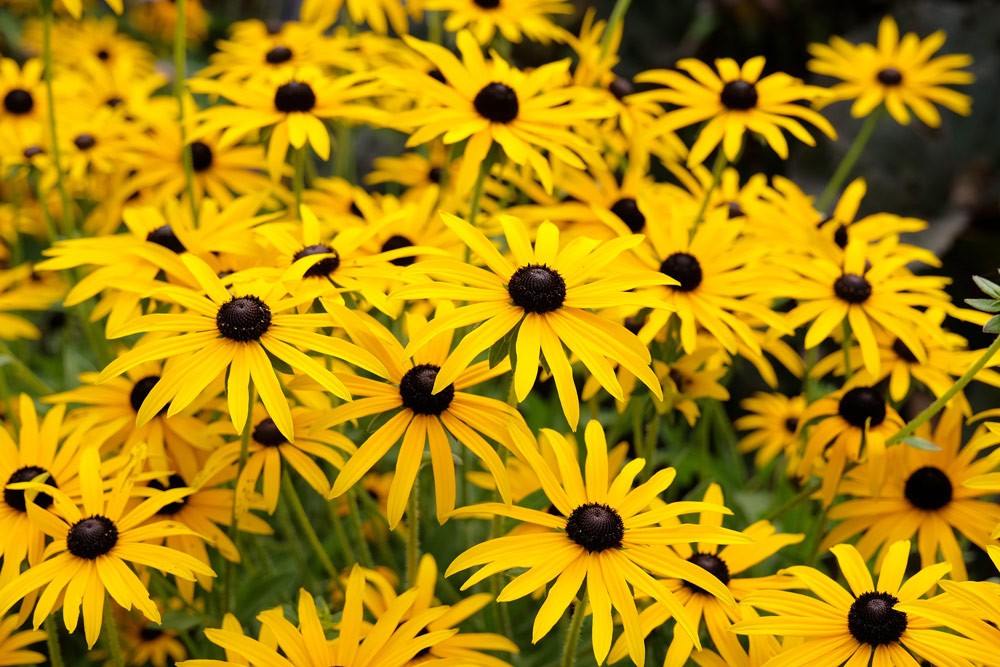
Black-eyed Susans bring cheerful golden-yellow daisies with distinctive dark centers that light up the summer garden. Their sturdy stems hold blooms high above fuzzy, lance-shaped foliage, creating a bright display that lasts for weeks. These sun-lovers perform best in open areas with well-draining soil, though they tolerate clay better than many perennials.
They make excellent additions to meadow gardens, cottage-style plantings, or mixed perennial borders. Black-eyed Susans grow in USDA Zones 3-9, making them suitable for most North American gardens.
Sow seeds directly onto prepared soil in a sunny location after the last frost date. Press seeds lightly into the soil but don’t cover them as they need light to germinate. Keep soil consistently moist until seedlings establish, then water when the top inch feels dry.
2. Columbine (Aquilegia)
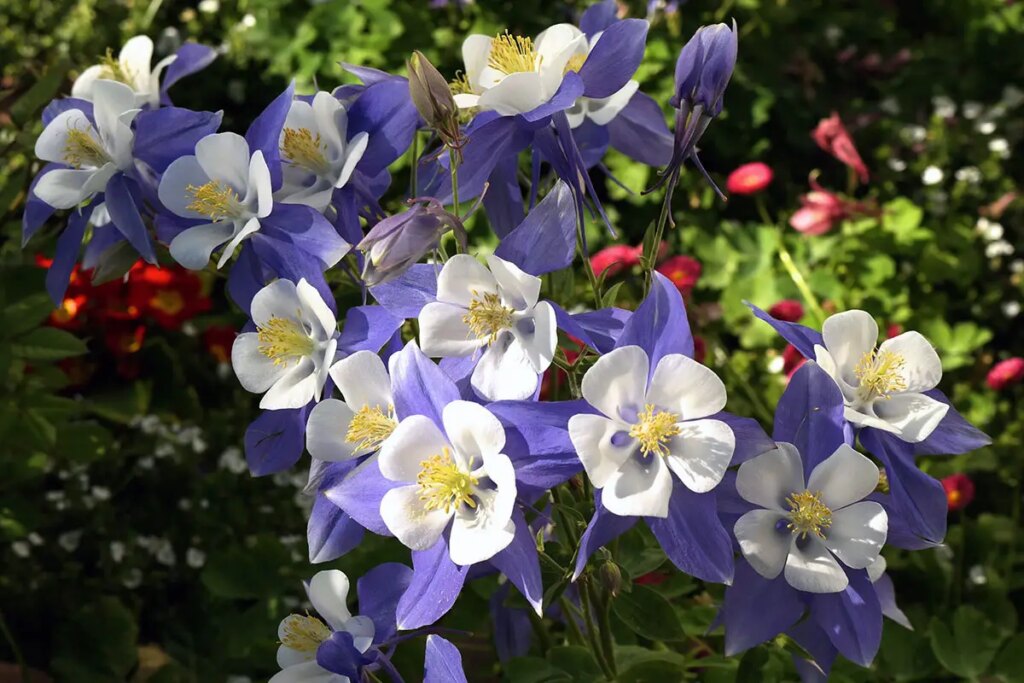
Columbines enchant with delicate, nodding blooms in colors from pale pastels to deep jewel tones. Each intricate flower features unique spurred petals that dangle gracefully above lacy, blue-green foliage. These adaptable perennials thrive in dappled light or partial shade but tolerate full sun in cooler climates.
Plant them in woodland edges, cottage gardens, or rock gardens where they’ll self-seed gently over time. Columbines grow happily in USDA Zones 3-9, with certain varieties better suited to specific regions.
Scatter seeds on the soil surface in early spring as they need light to germinate. They prefer rich, well-draining soil that stays moderately moist. Water regularly during their first season, but once established, they need only occasional watering during dry spells.
3. Coneflower (Echinacea)
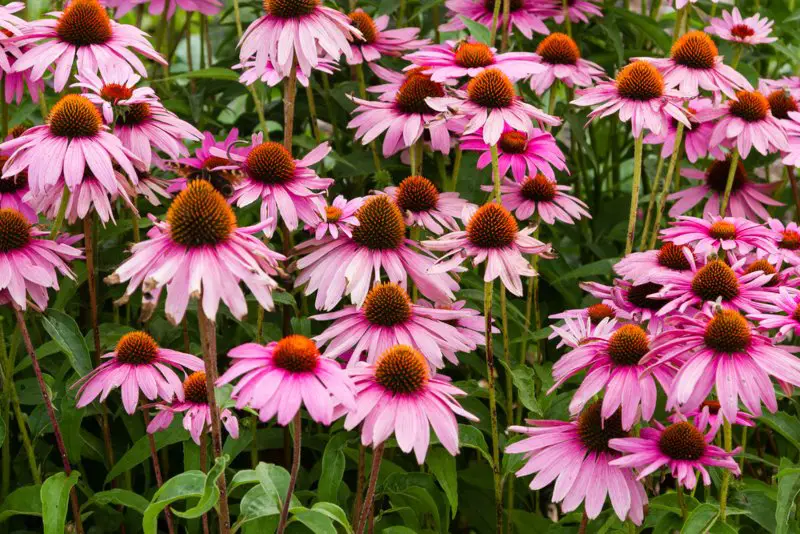
Coneflowers stand tall with distinctive raised centers surrounded by downward-sweeping petals in shades of purple, pink, white, or yellow. Their strong stems rise from coarse, dark green leaves, creating architectural interest even before the long-lasting blooms appear. These prairie natives thrive in open, sunny locations with at least 6 hours of direct sunlight daily.
They’re ideal for butterfly gardens, naturalistic plantings, and cutting gardens. Coneflowers are hardy in USDA Zones 3-9, withstanding both cold winters and hot summers.
For direct sowing, prepare a weed-free bed in full sun, then press seeds lightly into the soil in mid-spring. Coneflowers prefer lean, well-draining soil and actually flower better with minimal fertilizer. Once established, these drought-tolerant perennials need little supplemental watering except during extended dry periods.
4. Coreopsis (Tickseed)
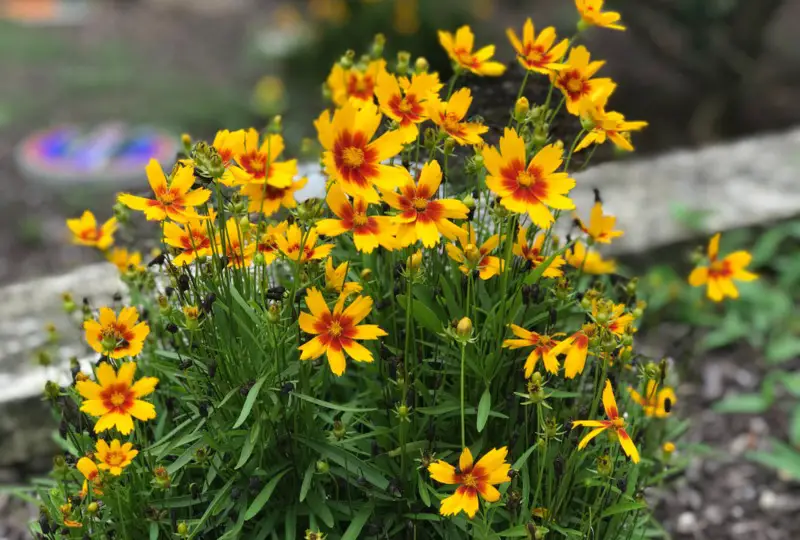
Coreopsis lights up the garden with masses of daisy-like blooms in cheerful yellows and oranges above finely-textured foliage. These prolific bloomers flower from early summer until frost if deadheaded regularly. Place these sun-worshippers in open borders or meadow plantings where they’ll receive at least 6 hours of direct sunlight daily.
Their compact habit makes them perfect for garden edges or as fillers between larger perennials. Coreopsis thrives in USDA Zones 4-9 and adapts to various growing conditions.
Scatter seeds over prepared soil after the threat of frost has passed, covering them with just a thin layer of soil. Water newly planted seeds consistently until established, then provide occasional deep watering during dry periods. These low-maintenance plants need little care beyond deadheading to encourage continued blooming.
5. Yarrow (Achillea)
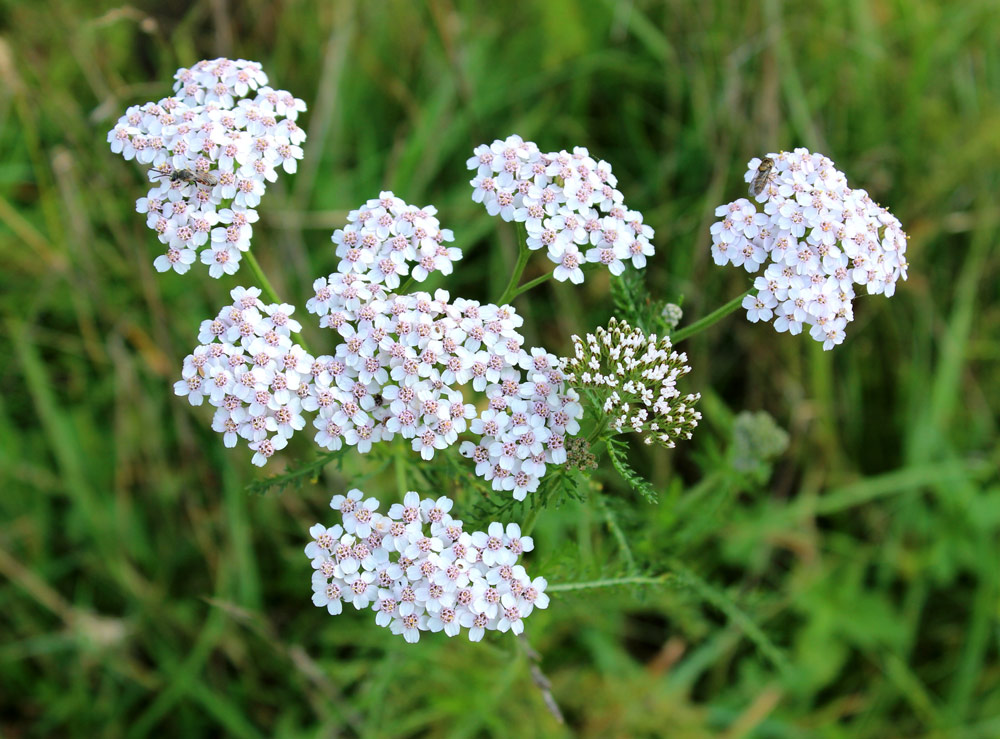
Yarrow creates flat-topped clusters of tiny flowers in shades from classic white to vibrant yellow, pink, and red. Its feathery, aromatic foliage forms attractive mounds that provide texture even when the plant isn’t blooming. These tough perennials excel in hot, dry locations with poor soil where many other plants struggle.
Use them in drought-tolerant landscapes, butterfly gardens, or mixed perennial borders. Yarrow performs reliably in USDA Zones 3-9, adapting to a wide range of growing conditions.
Direct sow yarrow seeds by pressing them lightly into prepared soil, as they need some light for germination. These adaptable plants prefer well-draining, even gravelly soil and bloom better in lean conditions without added fertilizer. Water seedlings until established, then yarrow rarely needs supplemental irrigation except during severe drought.
6. Hollyhocks (Alcea)
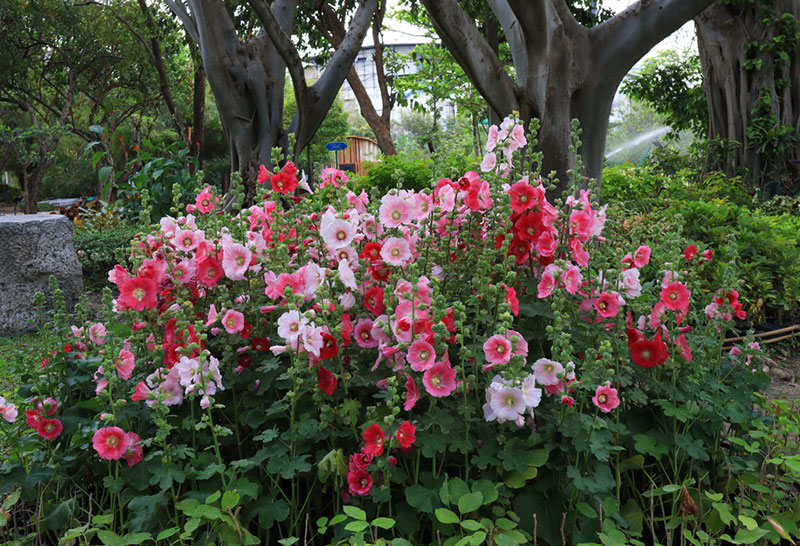
Hollyhocks create dramatic vertical interest with tall spires covered in saucer-shaped blooms that open sequentially from bottom to top. Available in nearly every color except true blue, these stately flowers add old-fashioned charm to garden backgrounds. Position these towering beauties against walls, fences, or at the back of borders where they’ll receive full sun.
Their impressive height (often 4-8 feet) makes them natural focal points in cottage gardens or traditional perennial borders. Most hollyhocks grow as short-lived perennials or biennials in USDA Zones 3-8.
For direct sowing, press seeds lightly into prepared soil in early spring after the last frost. Hollyhocks prefer rich, well-draining soil but can adapt to average garden conditions. Water young plants consistently and provide support for taller varieties that might topple in strong winds.
7. Delphiniums

Delphiniums create breathtaking spires of densely packed florets in stunning blues, purples, pinks, and whites above deeply cut foliage. These cottage garden classics bring unmatched vertical drama and true blue colors to the garden. They perform best with morning sun and afternoon shade, especially in warmer regions.
Plant them in sheltered locations protected from strong winds, as their tall stems can be vulnerable to damage. Delphiniums thrive in USDA Zones 3-7, preferring the cooler summers of northern gardens.
Press seeds into the soil surface in early spring, as they need light to germinate. Delphiniums demand rich, fertile soil that drains well yet retains moisture. Water consistently, never allowing the soil to dry out completely, especially during flowering.
8. Sweet Peas
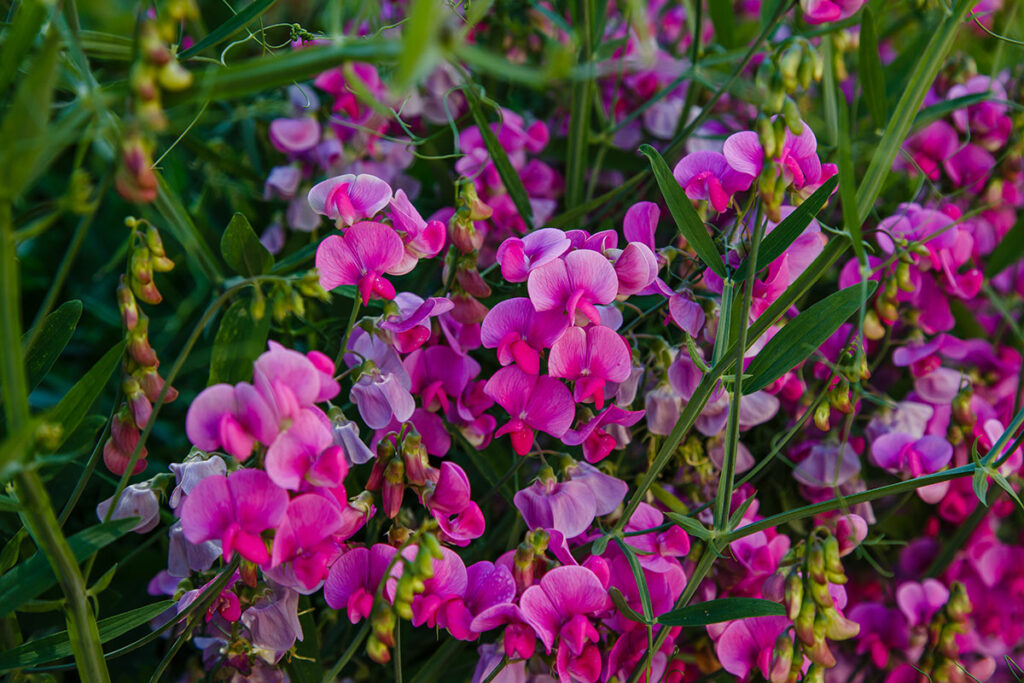
Perennial sweet peas produce clusters of butterfly-like blooms in shades of pink, purple, and white on vigorous climbing vines. Unlike their annual cousins, these long-lived climbers return reliably each year, though their flowers lack the intense fragrance of annual varieties. These enthusiastic climbers need sturdy support structures like trellises, fences, or arbors.
Plant them in sunny spots where they can scramble upward, or let them cascade over walls as a flowering ground cover. Perennial sweet peas thrive in USDA Zones 4-8 and can become quite vigorous in ideal conditions.
Direct sow seeds in early spring after soaking them overnight to speed germination. Sweet peas appreciate well-draining soil enriched with compost but adapt to various soil types. Water consistently during the growing season, especially when flowering.
9. Bee Balm (Monarda)
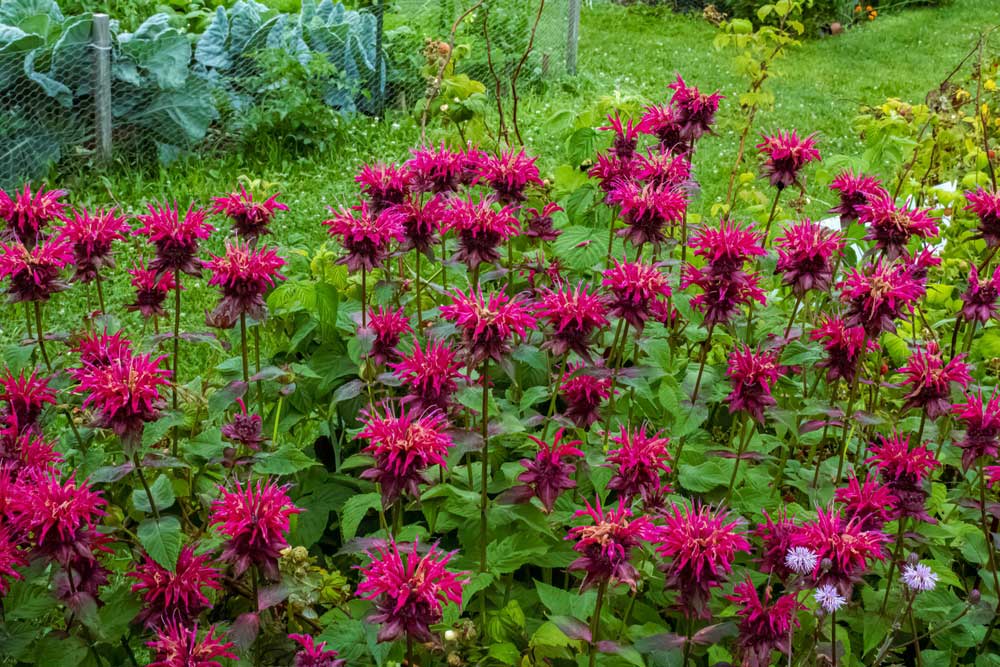
Bee balm produces whorls of tubular flowers in vibrant reds, pinks, purples, or whites resembling exploding fireworks atop aromatic foliage. This native plant’s unique flower form and minty-citrus scent add sensory appeal while attracting pollinators. Position bee balm in sunny to lightly shaded locations where air circulation is good to prevent powdery mildew.
It makes an excellent addition to wildlife gardens, herb gardens, or mixed perennial borders. Bee balm thrives in USDA Zones 4-9, adapting to various climate conditions.
Press seeds lightly into prepared soil in spring after frost danger passes. Bee balm prefers rich, consistently moist soil but tolerates a range of conditions once established. Water regularly, especially during dry periods, keeping the soil evenly moist but not soggy.
10. Lupines
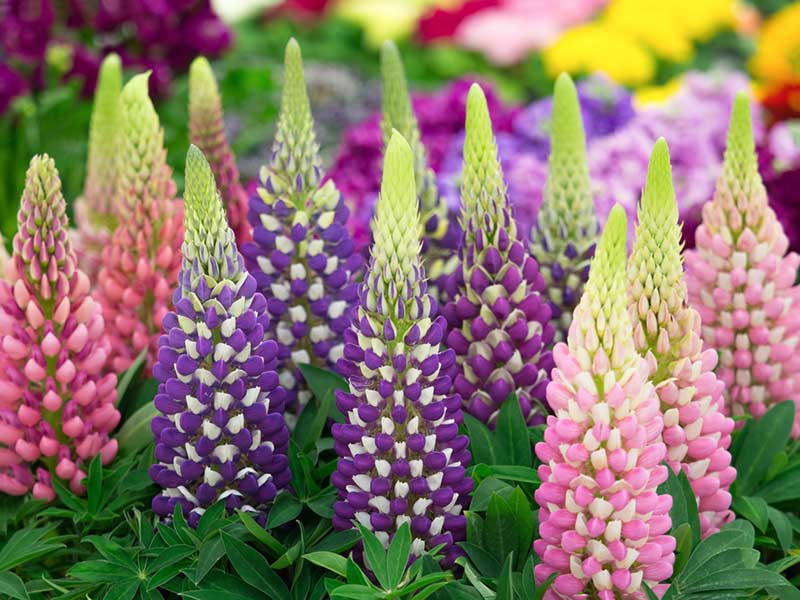
Lupines create magnificent spires densely packed with pea-like flowers in blues, purples, pinks, yellows, and bicolors above distinctive palmate foliage. Their architectural presence and ability to fix nitrogen in the soil make them both beautiful and beneficial. These cool-climate favorites perform best in full sun to light shade with good air movement.
Plant them in wildflower meadows, cottage gardens, or as specimens in mixed borders. Lupines grow well in USDA Zones 3-7, preferring cooler summer temperatures.
For direct sowing, nick seeds lightly with a file and soak overnight to improve germination. Lupines prefer slightly acidic, well-draining soil and resent being transplanted due to their long taproots. Avoid high-nitrogen fertilizers, as lupines can fix their own nitrogen.
11. Shasta Daisy
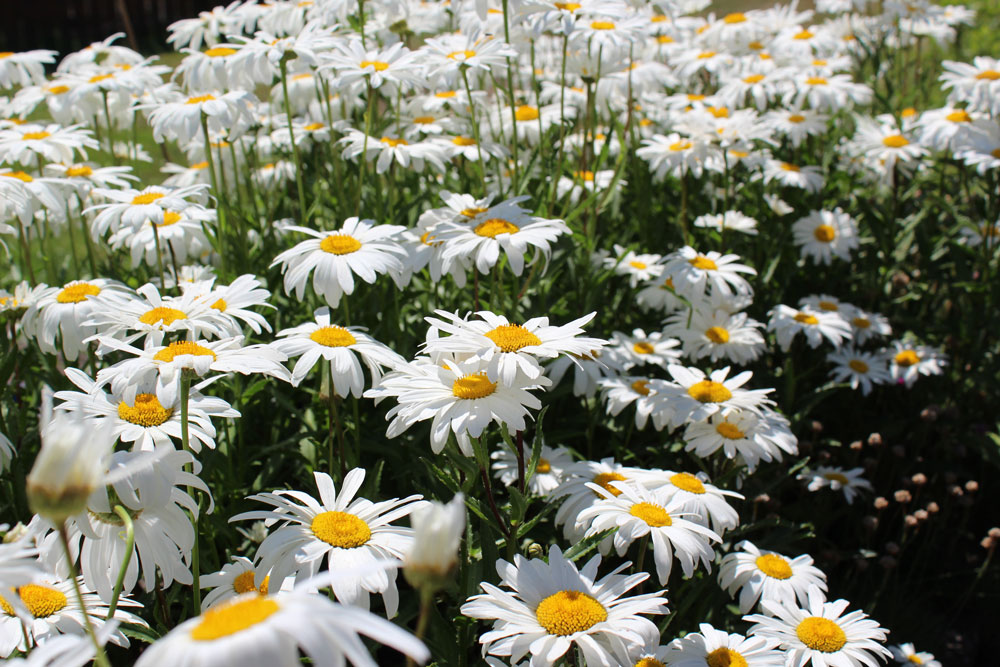
Shasta daisies bring classic charm with pure white petals surrounding golden yellow centers, creating bright spots of light in the summer garden. Their simple flowers on sturdy stems rise above glossy, dark green foliage, providing months of carefree blooms perfect for cutting. These sun-loving perennials shine in cottage gardens, mixed borders, or naturalistic meadow plantings.
Their tidy habit and extended bloom period make them reliable garden workhorses. Shasta daisies thrive in USDA Zones 4-9, performing well in various climate conditions.
Scatter seeds on the soil surface in spring and press lightly into contact with the soil. They prefer moderately fertile, well-draining soil and don’t require rich conditions to bloom prolifically. Deadhead regularly to extend the blooming season and divide every 2-3 years to maintain vigor.
12. Blanket Flower (Gaillardia)
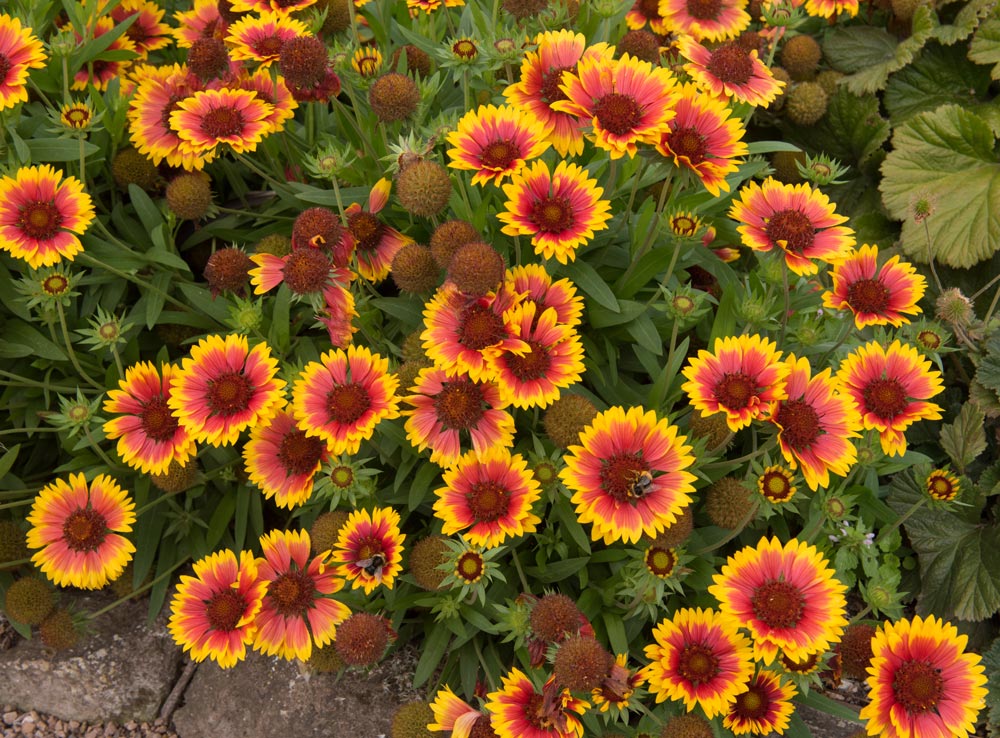
Blanket flowers dazzle with bold, daisy-like blooms featuring warm sunset colors – typically red centers with yellow-tipped petals. Their vibrant flowers appear abundantly above blue-green foliage from early summer until frost with minimal care. These drought-tolerant perennials thrive in hot, sunny locations with poor to average soil.
Plant them in rock gardens, xeriscape designs, or at the front of borders where their bright colors create impact. Gaillardia performs reliably in USDA Zones 3-10, making it suitable for most gardening regions.
Scatter seeds on well-prepared soil in spring after the threat of frost has passed. Blanket flowers insist on excellent drainage and actually bloom better in lean, even gravelly soil. These low-maintenance plants rarely need supplemental fertilizer and may become overly lush with too much nutrition.
13. Foxglove (Digitalis)

Foxgloves create dramatic spires covered in tubular, speckled blooms that open sequentially in shades of purple, pink, white, or yellow. Their tall flower stalks rise impressively from rosettes of downy, lance-shaped leaves, creating vertical architecture. Position these woodland-edge plants in locations that receive morning sun and afternoon shade, or in dappled light beneath high tree canopies.
They bring cottage-garden charm to woodland settings, shade gardens, or mixed borders. Most foxgloves grow as biennials or short-lived perennials in USDA Zones 4-8.
Press seeds lightly into the soil surface in spring, as they need light for germination. Foxgloves prefer rich, well-draining soil with ample organic matter that retains moisture without becoming waterlogged. Water consistently throughout the growing season, especially during dry periods.
14. Penstemon

Penstemons produce graceful spikes of tubular flowers in shades of pink, purple, red, or white above narrow, often glossy foliage. Their extended blooming period and attraction for hummingbirds make them valuable garden additions from summer through fall. These adaptable perennials perform best in full sun to light shade with good air circulation.
Use them in rock gardens, dry borders, or cottage-style plantings where their informal habit blends naturally. Penstemons grow well in USDA Zones 3-8, depending on the specific variety.
Scatter seeds on the soil surface in spring after danger of frost has passed. Penstemons insist on excellent drainage and prefer lean, even gravelly soil with minimal organic matter. Water young plants consistently until established, then reduce frequency as they become drought-tolerant with maturity.
15. Verbena Bonariensis

Verbena bonariensis creates airy clusters of tiny purple flowers held atop slender, branching stems that seem to float above neighboring plants. Despite its delicate appearance, this architectural perennial provides sturdy height and movement while requiring minimal ground space. These see-through perennials shine when placed throughout sunny borders where they combine with virtually any companion plants.
They add height and movement to perennial meadows, cottage gardens, and modern landscape designs. Verbena bonariensis grows in USDA Zones 7-11 but often self-seeds in colder regions.
Press seeds lightly into prepared soil in spring after the last frost. Verbena prefers well-draining soil in full sun but adapts to various soil types as long as they don’t stay waterlogged. These low-maintenance plants rarely need fertilizing and may become floppy with excessive nutrition.


